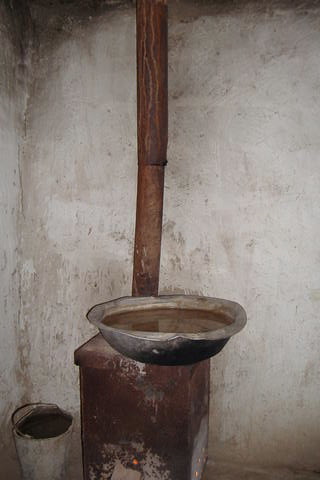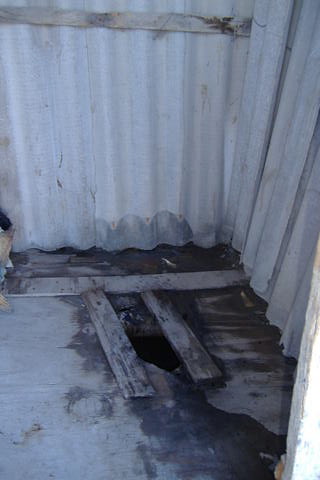Home on the range
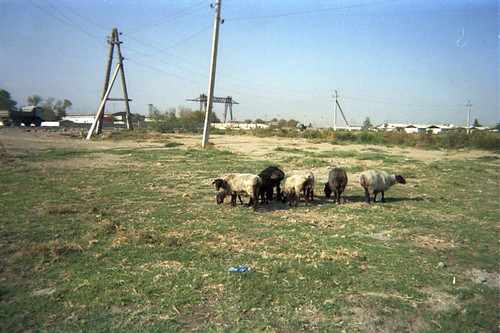 |
| On my way to work I would pass livestock of all kinds, including sheep, camels, chickens and cows. Lamb was the meat of choice for most Turkmen dishes, although imported chicken legs (cut off from chickens raised primarily for their breasts consumed by western countries) were definitely abundant for larger, fancier meals. Wild dogs also roamed the streets, or else they were chained up and treated very poorly as guard dogs |
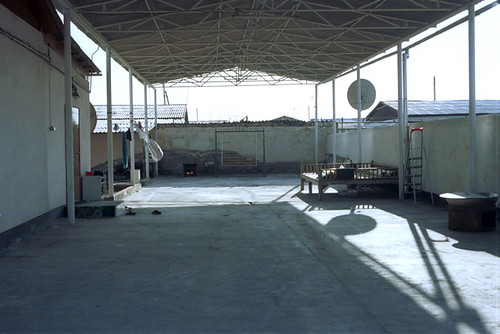 |
This was the "garage" area of my
second family's house. The
concrete floor and overhead awning provided a great space for outdoor
parties, exercising, laundry drying, and general relaxing.
|
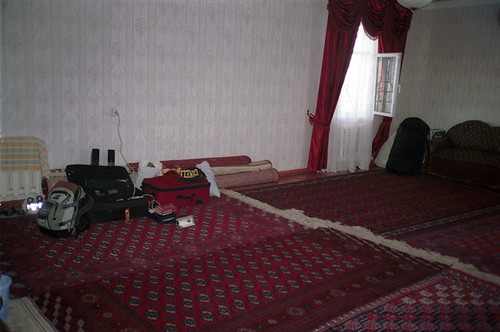 |
| This was my room where I slept, prepped my lessons, played with my host sister and brother, listened to music and read. The carpets are absolutely gorgeous and a source of Turkmen pride. Every week I dusted, vacuumed, and wiped down the floors. Every large party, I had to clear out my things to make way for groups of people who would dine on the floor of my room. |
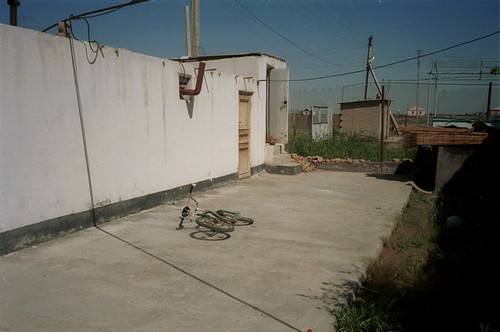 |
I had to walk outside to use my
family's toilet and bath house. Inside,
it looked similar to the "bath" and
"toilet" (pictured below) at my friend's house. My family actually did
have a shower
head that worked well
when the water wasn't shut off randomly...
|
| Photos by Sarah Francis |
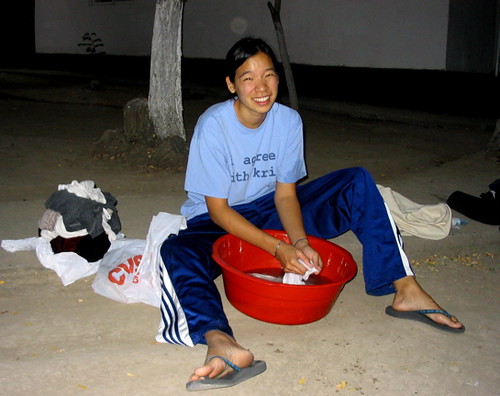 |
| Photo by Jane Bardon |
| This was my first time doing my laundry by hand. Washing with hot water inevitably led to finger blisters and my jeans never did get really clean while I was there. But how can you go wrong with a laundry detergent named "Barf"? |
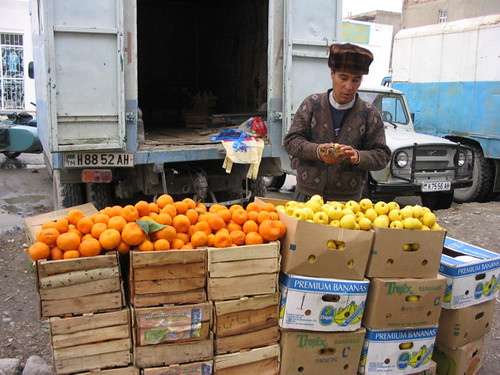 |
| Photo by Jane Bardon |
I always picked up fresh fruit from the local bazaars: oranges, apples, grapes, melons, cherries, bananas, and others. There will never be a sweeter melon than a Turkmen "gawun". |
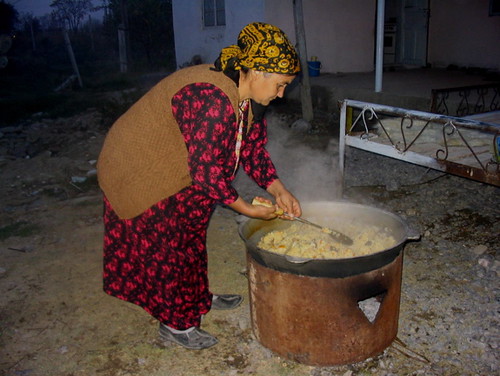 |
| Photo by Jane Bardon |
| Here's an older Turkmen woman preparing the traditional meal, Palov, made with rice, lamb, carrots, onions, and lots of oil. This meal is easy to make, and it serves a lot of people at the same time. For a birthday, wedding, or Sunday evening tradition, Turkmen families usually eat palov out of one large bowl, with their hands, while sitting on the floor. |
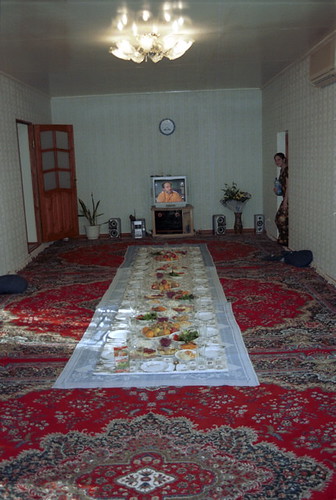 |
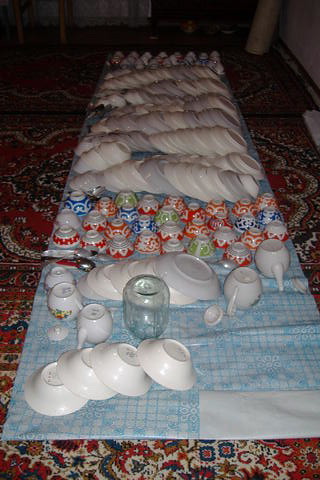 |
| Photo by Sarah Francis | |
A
party spread consists of fruit,
raw vegetable salads (i.e.
pickled cabbage and carrots, tomatoes and cucumbers, eggplant, and
fresh
herbs), cookies and candy, fresh bread and the main dish (palov,
dograma, lamb soup, or
manty dumplings). The
dining "table" adjusts in size according to the number of guests, and
the TV remains on throughout the celebration. You can imagine
how washing the dishes afterward always took a bit of team work.
|
|
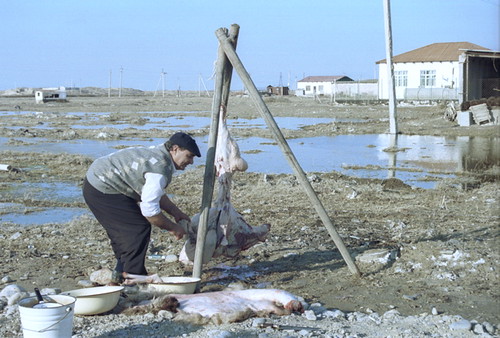 |
| One of the most involved Turkmen meals is dograma, reserved for special occasions such as the Muslim Day of Atonement. Each family slaughters a sheep and cooks the meat and internal organs in a broth. |
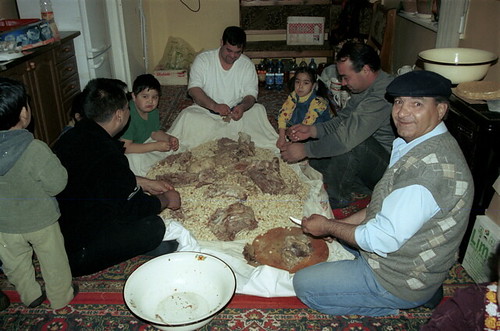 |
After the family breaks up many loaves of bread, the
cook combines the dry
mixture of bread, meat, and internal organs with the broth and the
family shares the meal with all their friends
and neighbors as an offering to God.
|
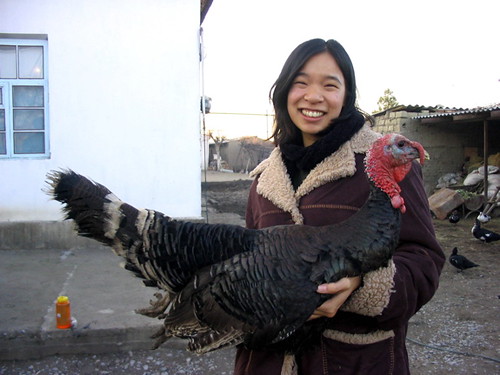 |
| Photo by Jane Bardon |
| I had the privilege of holding my food in my hands at my friend Kennon's house. It was Thanksgiving and we needed a few turkeys to make our meal complete. I prayed for this bird as another friend positioned its face towards Mecca during the slaughtering. The bird served its purpose. |
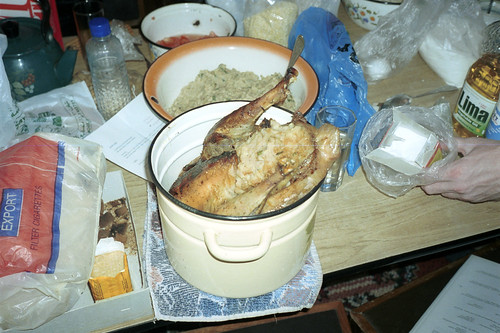
And it tasted good.
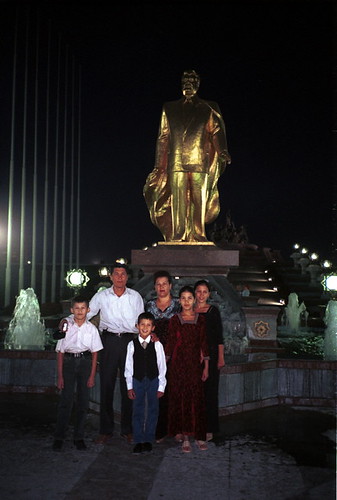 |
| This is my Turkmen host family during my two months of training: Mirat, Berdi, Shohrat, Aybibi, Guncha, and Maral. They loved me and I loved them dearly; I regret that they had to move into Ashgabat, leaving me in Ruhabat to find another family. |
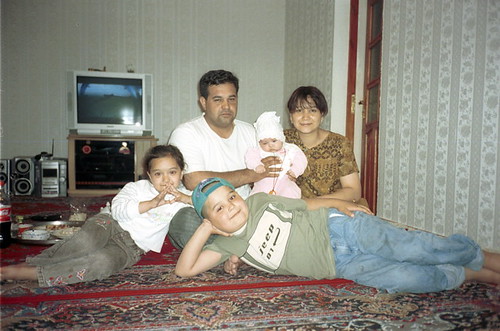 |
Luckily I did find another host family, whom I
stayed with for almost
two
years: Merdon
and Aygul holding Zinyet, with Sahra, and Ahmet. We got along well, but
I never
did come to love them as much as some of my other Turkmen people I met.
They
were very well-off and educated, as well as prideful in their
generosity; I was
also prideful in not giving as much of myself to them as I could have.
I really
had nothing to complain about - they had air conditioning, a microwave,
laundry
"machine" and a computer. I thank God for them and think about and pray
for them
often.
|
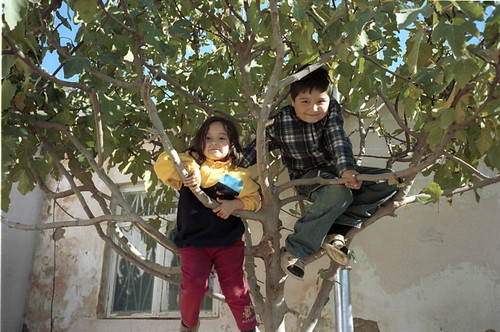 |
| Two little monkeys, sitting in a tree... |
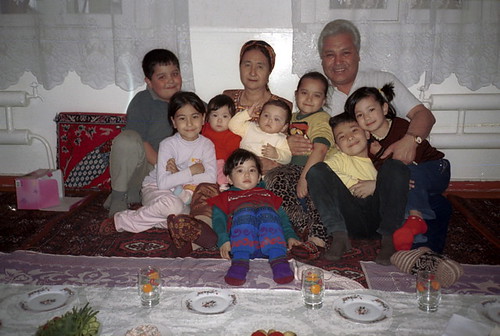 |
These are my host grandparents
and all their grandchildren.
Turkmen families usually live in the same town as their
extended family where they share resources and throw large parties
together.
|
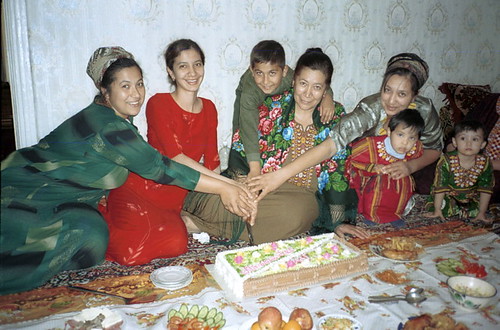 |
| This is my surrogate family, whom I loved the most. Gulistan (center), was my Turkmen tutor and very good friend. She has three daughters and 3 grand children. Shemshat (in red), is a young English teacher whom I taught and befriended throughout my service. She loves art and plays the piano. |
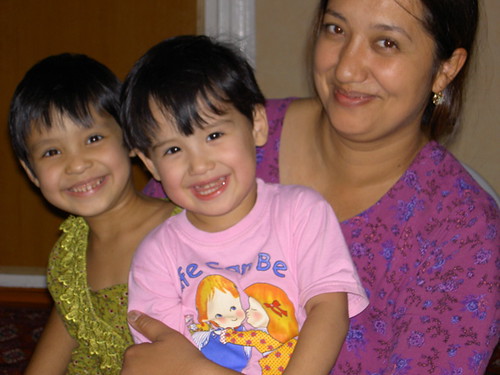 |
Guljahan,
Shemshat's older
sister, was my next door neighbor and
another good friend. I drank tea with her many times while
admiring the Turkmen and Afghan rugs her husband made and sold.
Her two daughters, Jamila and Melike, were joys to be around.
|
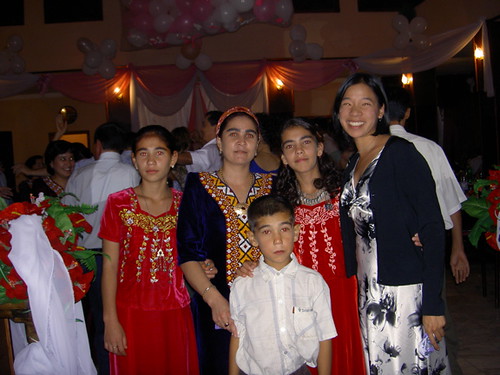 |
| And finally, here is my last host family who took me in for the last two months of service. Ogulnazik, the girl I'm hugging, was one of my gifted students who loved to learn and attend my English clubs. Her mother, Gozel, worked so hard and gave me and her family everything. She loved me like a daughter, and I'm thankful for her care when I did not have anywhere else to go. |

My backyard. Such a view is hard to forget in all its uniqueness.
A camel's cry is a hard thing to forget.
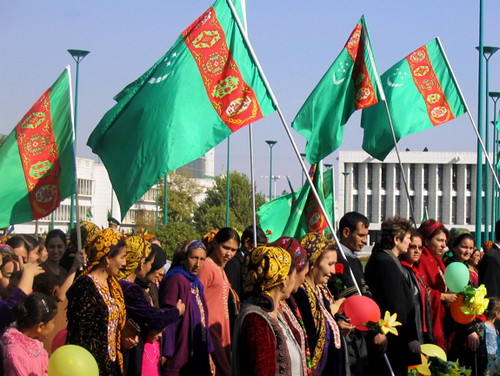 |
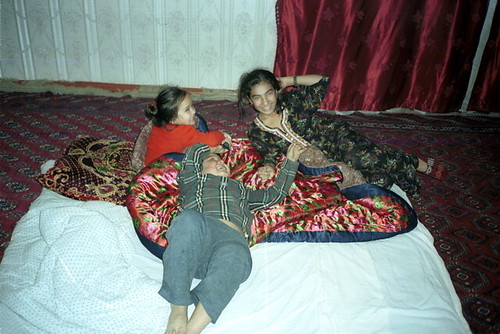 |
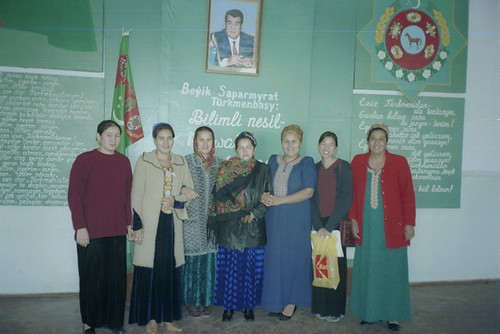 |
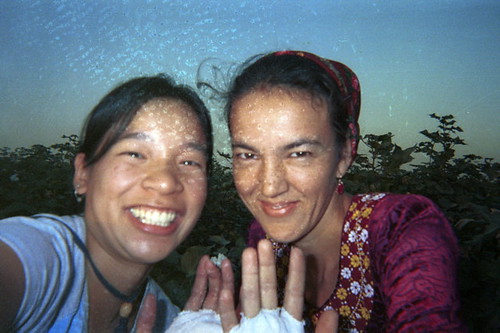 |
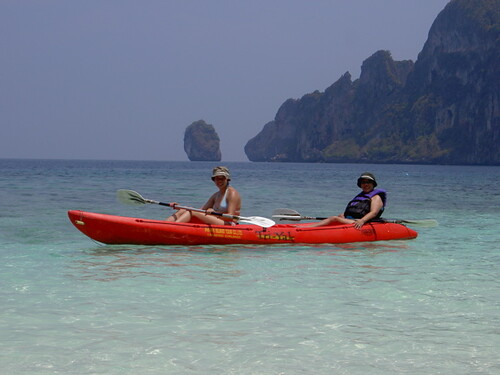 |
| TURKMENISTAN | DAILY LIFE | WORK | PEOPLE | VACATION |
Click here to go back to the index page.
Click here for additional resources about Turkmenistan and my Peace Corps experience.
